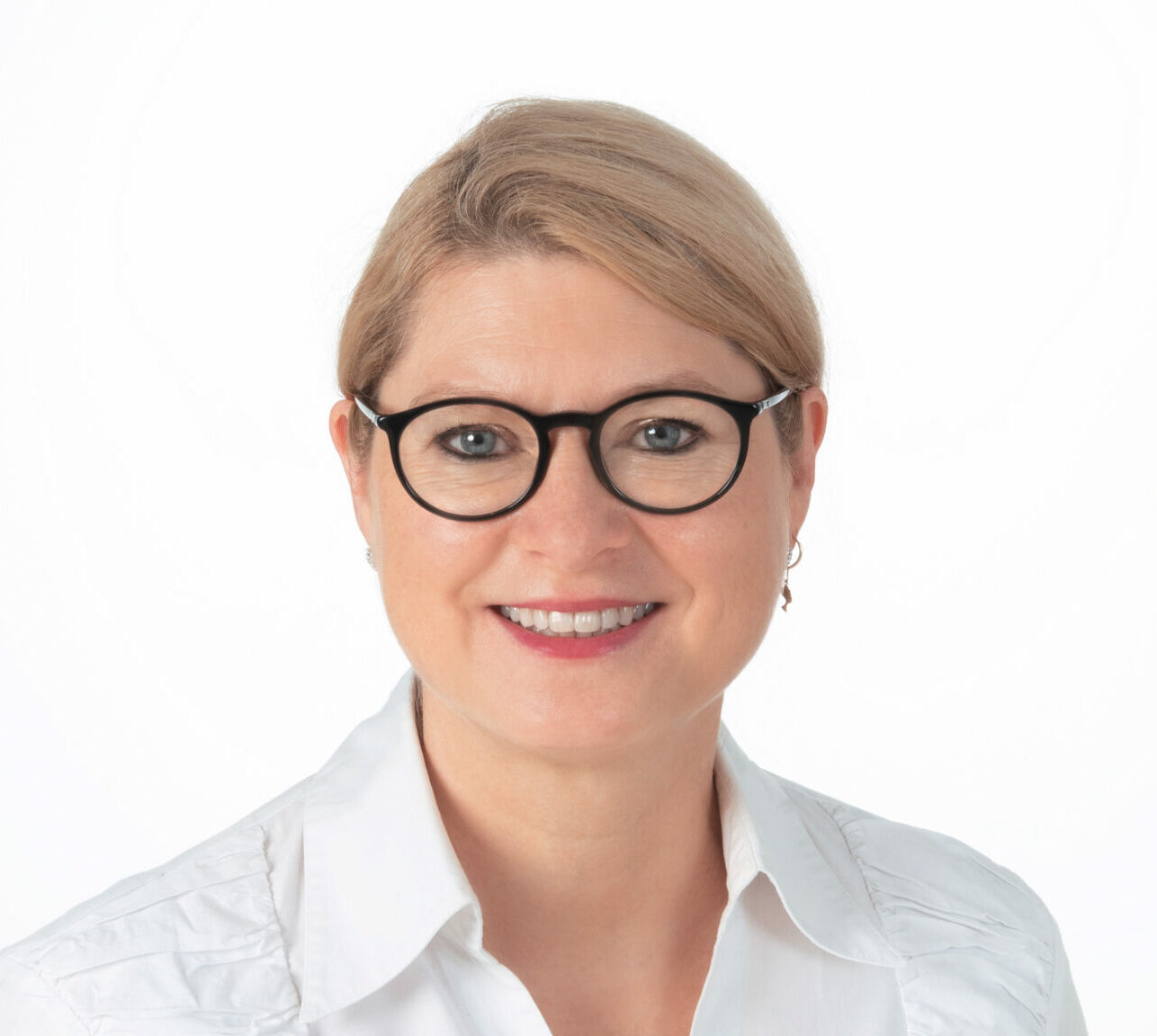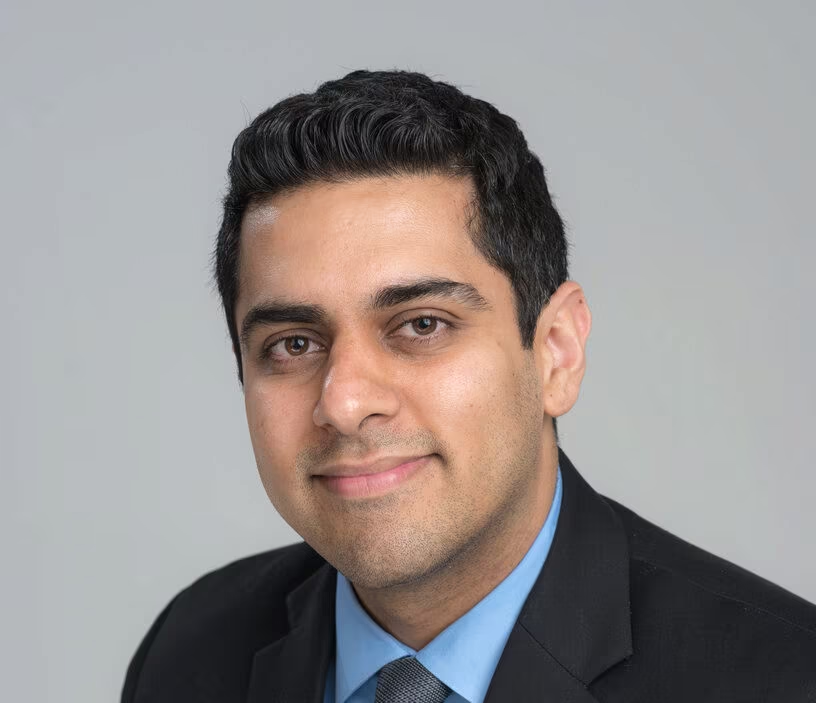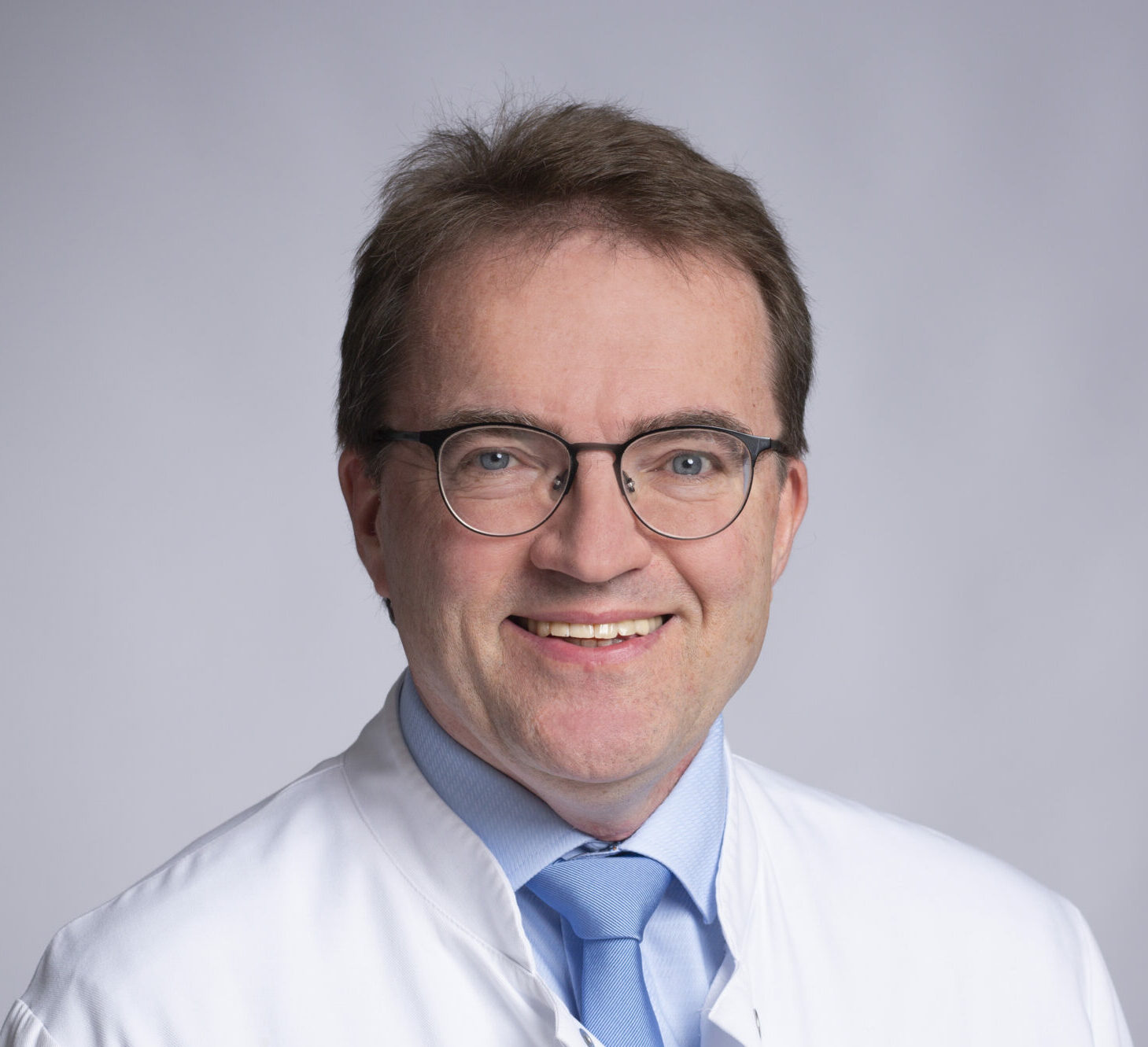touchPANEL DISCUSSION Prurigo nodularis: Improving awareness, diagnosis, management and quality of life
Watch three experts discuss the symptom burden faced by patients with prurigo nodularis, and how clinicians can optimize diagnosis and treatment of the disease.
**Now including 2023 UPDATE (scroll to chapter 5)**

Prof. Sonja Ständer
University of Münster, Münster, Germany
CHAIR
Panelists:
Introduction
Chair Prof. Sonja Ständer introduces panellists Dr Shawn Kwatra and Prof. Matthias Augustin
view bio and disclosures 1/5 Next ChapterWhat are the clinical challenges associated with PN that contribute to the overall burden of the disease?
Watch experts discuss the clinical characteristics and disease burden of prurigo nodularis.
view bio and disclosures 2/5 Next ChapterHow can PN be differentiated from other skin conditions and what are the current management options?
Watch experts discuss how to effectively diagnose prurigo nodularis and the treatment options currently available.
view bio and disclosures 3/5 Next ChapterWhich emerging treatments may help to address the current unmet needs for patients with PN?
Watch experts discuss the changing treatment landscape for prurigo nodularis and novel therapies on the horizon.
view bio and disclosures 4/5 Next Chapter2023 UPDATE: Key developments relating to the management of PN
Watch experts discuss the key developments in the management of prurigo nodularis since the core activity recording in December 2022.
view bio and disclosures 5/5 Take CE/CME TestOverview & Learning Objectives
Overview
In this activity, three experts share their experience and guidance on diagnosing and caring for patients with prurigo nodularis, and discuss the available guidelines and treatment options for the disease.
This activity is jointly provided by USF Health and touchIME. read more
Target Audience
This activity has been designed to meet the educational needs of dermatologists, internal medicine specialists, nurse practitioners, physician assistants, advanced practice clinicians, managed care/pharmacy directors/pharmacists and family practice/general practice/primary care physicians.
Disclosures
USF Health adheres to the Standards for Integrity and Independence in Accredited Continuing Education. All individuals in a position to influence content have disclosed to USF Health any financial relationship with an ineligible organization. USF Health has reviewed and mitigated all relevant financial relationships related to the content of the activity. The relevant relationships are listed below. All individuals not listed have no relevant financial relationships.
Faculty
Prof. Sonja Ständer discloses: Advisory board, panel and consultancy fees from AbbVie, Almirall, Beiersdorf, Bellus Health, Benevolent, Bionorica, Cara, Celgene, Cello Health, Clexio, DS Biopharma, Eli Lilly, Escient Pharmaceuticals, Galderma, Grünenthal, Integrity CE, Kiniksa, Klinge Pharma, LEO Pharma, Maruho, Menlo (now trading as VYNE Therapeutics), Merz, Perrigo, Pfizer, Sanofi, Sienna, Symbio Research, Trevi Therapeutics, Vanda Pharmaceuticals, Vifor and WebMD; Grants/research support from Almirall, Beiersdorf, LEO Pharma, Menlo (now trading as VYNE Therapeutics), Novartis, Sanofi and Trevi Therapeutics; Speaker’s bureau Almirall, Beiersdorf, Bristol Myers Squibb, Eli Lilly, Sanofi, Galderma, LEO Pharma, L’Oréal, Menlo, moroscience, Novartis, Omnicuris, P.G. Unna Academy, Pfizer, Pierre Fabre, Sanofi, UCB and Vifor.
Dr Shawn Kwatra discloses: Advisory board, panel and consultancy fees from AbbVie, Arcutis Biotherapeutics, ASLAN Pharmaceuticals, Celldex Therapeutics, Galderma, Genzada Pharmaceuticals, Incyte, Johnson & Johnson, Novartis, Pfizer, Regeneron Pharmaceuticals and Sanofi; Investigator for Galderma, Pfizer and Sanofi.
Prof. Matthias Augustin discloses: Advisory board, panel and consultancy fees from Beiersdorf, LEO Pharma, Sanofi, Trevi Therapeutics; Grants/research support Beiersdorf, LEO Pharma and Sanofi.
Content reviewer
Angela M Hill, PharmD, CRPh has no financial interests/relationships or affiliations in relation to this activity.
Touch Medical Contributors
Alison Scott and Christina Mackins-Crabtree have no financial interests/relationships or affiliations in relation to this activity.
USF Health Office of Continuing Professional Development and touchIME staff have no financial interests/relationships or affiliations in relation to this activity.
Requirements for Successful Completion
In order to receive credit for this activity, participants must review the content and complete the post-test and evaluation form. Statements of credit are awarded upon successful completion of the post-test and evaluation form.
If you have questions regarding credit please contact cpdsupport@usf.edu.
Accreditations
Physicians
This activity has been planned and implemented in accordance with the accreditation requirements and policies of the Accreditation Council for Continuing Medical Education (ACCME) through a joint providership of USF Health and touchIME. USF Health is accredited by the ACCME to provide continuing medical education for physicians.
USF Health designates this enduring material for a maximum of 1.0 AMA PRA Category 1 CreditTM. Physicians should claim only the credit commensurate with the extent of their participation in the activity.
The European Union of Medical Specialists (UEMS) – European Accreditation Council for Continuing Medical Education (EACCME) has an agreement of mutual recognition of continuing medical education (CME) credit with the American Medical Association (AMA). European physicians interested in converting AMA PRA Category 1 CreditTM into European CME credit (ECMEC) should contact the UEMS (www.uems.eu).
Advanced Practice Providers
Physician Assistants may claim a maximum of 1.0 Category 1 credits for completing this activity. NCCPA accepts AMA PRA Category 1 CreditTM from organizations accredited by ACCME or a recognized state medical society.
The AANPCP accepts certificates of participation for educational activities approved for AMA PRA Category 1 CreditTM by ACCME-accredited providers. APRNs who participate will receive a certificate of completion commensurate with the extent of their participation.
Pharmacists
USF Health is accredited by the Accreditation Council for Pharmacy Education as a provider of continuing pharmacy education. This knowledge-based program has been approved for 1.0 contact hour (0.1 CEUs). Universal program number is as follows: 0230-9999-23-017-H01-P.
Date of original release: 08 December 2022. Date credits expire: 21 September 2024.
If you have any questions regarding credit please contact cpdsupport@usf.edu.
Learning Objectives
After watching this activity, participants should be better able to:
- Define the burden of disease and unmet need for prurigo nodularis
- Identify the differential diagnoses for patients with prurigo nodularis and recall the range of treatment and management options available
- Evaluate the emerging treatment options for the management of prurigo nodularis and how these may impact current clinical practice
Faculty & Disclosures

Prof. Sonja Ständer
University of Münster, Münster, Germany
Sonja Ständer is a professor of dermatology and neurodermatology at the University of Münster and the head of the interdisciplinary Center for Chronic Pruritus (KCP) at the University Hospital Münster. read more
In 2001, she received her board certification in dermatology, allergology and phlebology. Following this, she remained at the Department of Dermatology as an IZKF-funded research fellow. In 2006, she became board certified in dermatopathology after training in Münster and at the Ackermann Academy in New York. Shortly after completing her habilitation, she established the interdisciplinary Center for Chronic Pruritus and played a leading role in the foundation of the first international and national societies for itch.
In 2011, Prof. Ständer obtained the title of Professor of Dermatology (W3) from the University of Münster and dedicated herself to translational neurodermatology and pruritus research, becoming a world leader in this field. Her research group has received several recognized research grants, including from the DFG, BMBF, IZKF and BMWi. The University of Wroclaw, Poland, awarded her with a doctor honoris causa title in 2015 for her research efforts.
Prof. Sonja Ständer discloses: Advisory board, panel and consultancy fees from AbbVie, Almirall, Beiersdorf, Bellus Health, Benevolent, Bionorica, Cara, Celgene, Cello Health, Clexio, DS Biopharma, Eli Lilly, Escient Pharmaceuticals, Galderma, Grünenthal, Integrity CE, Kiniksa, Klinge Pharma, LEO Pharma, Maruho, Menlo (now trading as VYNE Therapeutics), Merz, Perrigo, Pfizer, Sanofi, Sienna, Symbio Research, Trevi Therapeutics, Vanda Pharmaceuticals, Vifor and WebMD; Grants/research support from Almirall, Beiersdorf, LEO Pharma, Menlo (now trading as VYNE Therapeutics), Novartis, Sanofi and Trevi Therapeutics; Speaker’s bureau Almirall, Beiersdorf, Bristol Myers Squibb, Eli Lilly, Sanofi, Galderma, LEO Pharma, L’Oréal, Menlo, moroscience, Novartis, Omnicuris, P.G. Unna Academy, Pfizer, Pierre Fabre, Sanofi, UCB and Vifor.

Dr Shawn Kwatra
Johns Hopkins University School of Medicine, Baltimore, MD, USA
Dr Shawn Kwatra, MD is an associate professor of dermatology at the Johns Hopkins University School of Medicine in Baltimore, MD, USA and director of the Johns Hopkins Itch Center. read more
His areas of clinical expertise include prurigo nodularis, chronic pruritus, atopic dermatitis and dermatology for ethnic skin. Dr Kwatra is funded by the National Institutes of Health and multiple foundations, and is a member of the board of directors of the Skin of Color Society. Dr Kwatra has been an author or co-author of over 200 publications in peer-reviewed international journals.
Dr Shawn Kwatra discloses: Advisory board, panel and consultancy fees from AbbVie, Arcutis Biotherapeutics, ASLAN Pharmaceuticals, Celldex Therapeutics, Galderma, Genzada Pharmaceuticals, Incyte, Johnson & Johnson, Novartis, Pfizer, Regeneron Pharmaceuticals and Sanofi; Investigator for Galderma, Pfizer and Sanofi.

Prof. Matthias Augustin
University Medical Center Hamburg-Eppendorf, Hamburg, Germany
Prof. Augustin is chair of health economics and dermatology at the University Medical Center Hamburg-Eppendorf. read more
His research focuses on health services research, health economics, epidemiology and clinical research. The main indications involved are psoriasis, atopic dermatitis, allergies, chronic wounds and skin cancer.
Prof. Augustin is the founding director of the Institute for Health Services Research in Dermatology and Nursing (IVDP), established in 2010. Prof. Augustin is also a founding director of the Hamburg Institute for Health Economics (HCHE), the largest centre in this discipline in Germany.
On a national and international level, he is involved in atopic dermatitis and psoriasis networks, the German skin cancer assembly and several WHO projects. Prof. Augustin is also a senior consultant to the German Ministry of Health, the Federal Joint Committee (GBA), and multiple statutory health insurance and pharmaceutical companies. As a dermatologist and allergologist, he holds more than two decades of clinical experience and remains active in his own clinic. Prof. Augustin has authored 60 medical books and about 850 scientific and medical papers.
Prof. Matthias Augustin discloses: Advisory board, panel and consultancy fees from Beiersdorf, LEO Pharma, Sanofi, Trevi Therapeutics; Grants/research support Beiersdorf, LEO Pharma and Sanofi.

REGISTER NOW FOR FREE ACCESS TO
- 1000+ topical and insightful peer-reviewed journal articles
- 100+ hours of bite-sized congress highlights
- 10 major therapy areas packed with the latest scientific advances
- 150+ specialties offering learn-on-the-go medical education
- + Concise email updates and newsletters so you never miss out
